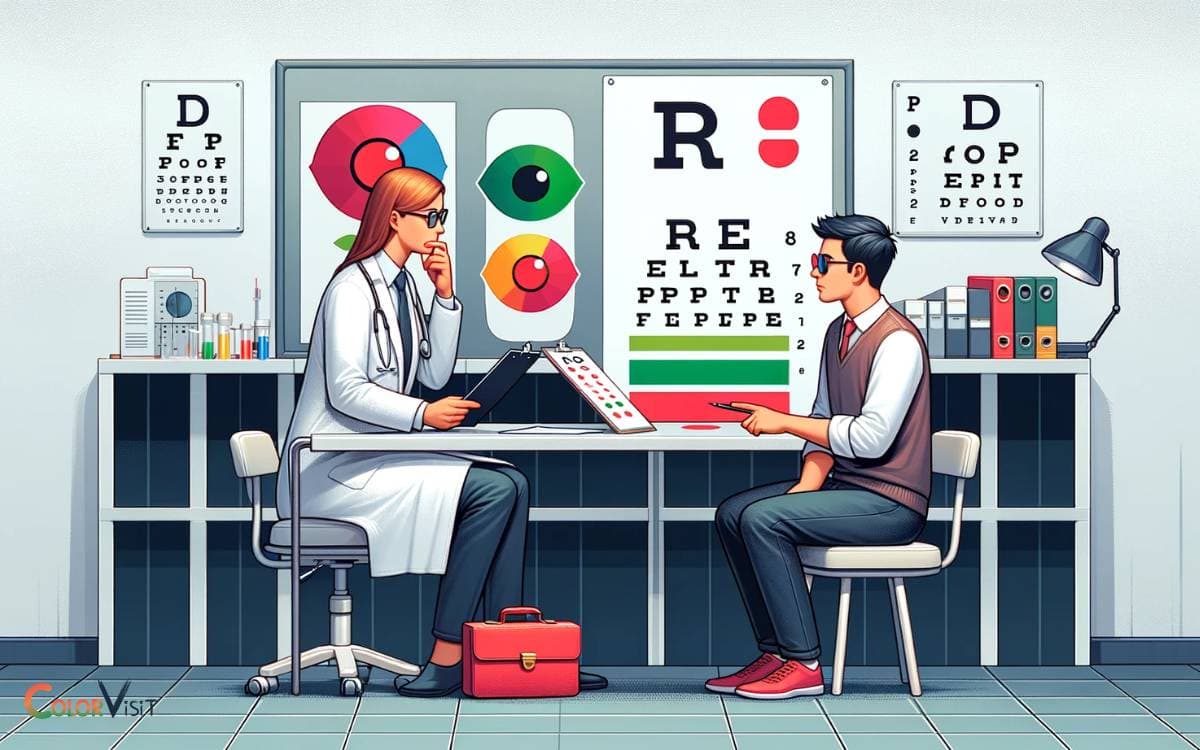How to Test for Red Green Color Blindness? Proven Guide!
Red-green color blindness is a common visual impairment where individuals have difficulty distinguishing between red and green hues. It stems from defects in the color-sensing molecules in the retina. Red green color blindness explained often highlights the prevalence of this condition, particularly among males, as it is linked to the X chromosome. While it can vary in severity, many individuals learn to adapt by relying on different cues in their environment. Educational resources and assistive technologies can help those affected navigate challenges in daily life related to this visual impairment.
Testing for this condition helps in adapting to the color vision deficiency and managing daily activities more effectively:
Detecting red-green color blindness early can significantly improve quality of life. Tailored strategies and tools can assist individuals in compensating for their color perception challenges.
Key Takeaway
Understanding Red-Green Color Blindness
Understanding red-green color blindness involves an in-depth comprehension of the visual impairment’s underlying mechanisms and its impact on color perception.
- This type of color blindness is predominantly caused by genetic factors, particularly the absence or malfunction of specific photopigments in the cone cells of the retina.
- Individuals with red-green color blindness struggle to differentiate between red and green hues due to the overlapping response of the affected cone cells to these colors.
- As a result, they perceive a limited range of colors, affecting various aspects of daily life, including the ability to interpret traffic lights, maps, and color-coded information.
Understanding the complexities of red-green color blindness is crucial for developing innovative solutions and tools to assist those with this condition in navigating a world designed for individuals with normal color vision.
Symptoms and Signs to Look For
Individuals with red-green color blindness may exhibit symptoms such as difficulty discerning between red and green hues, leading to challenges in interpreting color-coded information and signals in daily life.
Look for the following signs to identify red-green color blindness:
- Frustration, confusion, and difficulty in distinguishing between red and green objects
- Misreading of color-coded charts, maps, and graphs
- Challenges in identifying ripe fruits or vegetables based on their color
These symptoms can impact various aspects of an individual’s life, from academic performance to career choices. Understanding these signs can help in early detection and intervention.
Common Testing Methods
To accurately identify red-green color blindness, several common testing methods are employed by healthcare professionals and vision specialists.
- These methods include the Ishihara color test, which uses a series of plates containing colored dots to assess the ability to differentiate between red and green hues.
- Another method is the Farnsworth D-15 test, which involves arranging colored caps or discs in order of hue.
- Additionally, the Hardy-Rand-Rittler (HRR) test utilizes a set of pseudoisochromatic plates to detect color vision deficiencies.
- The Anomaloscope, a device that presents two different colored lights for comparison, is also used to diagnose red-green color blindness.
- Furthermore, the Cambridge Colour Test employs computerized assessments to evaluate color perception.
These testing methods play a crucial role in accurately diagnosing red-green color blindness and determining the appropriate course of action.
Online Color Blindness Tests
Online color blindness tests can provide a convenient and accessible way for individuals to assess their ability to differentiate between red and green hues, continuing the assessment process from traditional testing methods.
- These tests offer several advantages, including convenience, allowing individuals to take the test from the comfort of their homes.
- Accessibility, enabling people to assess their color vision using various devices such as smartphones, tablets, or computers.
- Additionally, these tests provide immediate results, offering instant feedback on color perception.
- However, it’s important to note that online tests should be used as a preliminary screening tool.
- Seeking professional diagnosis from an eye care specialist is crucial for accurate assessment and appropriate guidance.
After understanding the benefits and limitations of online color blindness tests, the next step is to explore the importance of seeking professional diagnosis.
Seeking Professional Diagnosis
Continuing the assessment process from online color blindness tests, seeking professional diagnosis from an eye care specialist is essential for accurate evaluation and appropriate guidance.
- An eye care specialist may conduct a comprehensive eye exam, including the Ishihara Color Test, the Farnsworth D-15 test, or the Hardy-Rand-Rittler test, to determine the type and severity of color blindness.
- They may also use advanced diagnostic tools such as the anomaloscope, which measures color vision and helps differentiate between red-green color blindness and other types.
- Additionally, genetic testing may be recommended to identify specific gene mutations associated with color blindness.
Professional diagnosis not only provides a precise understanding of the condition but also ensures tailored advice on coping strategies and access to innovative treatments, such as color-correcting lenses or gene therapy.
Conclusion
Understanding red-green color blindness is essential for identifying symptoms and signs.
Common testing methods, including online color blindness tests, can aid in determining the presence of the condition. Seeking a professional diagnosis is crucial for accurate results.
In the blink of an eye, being knowledgeable about red-green color blindness can make a world of difference in identifying and managing the condition.






